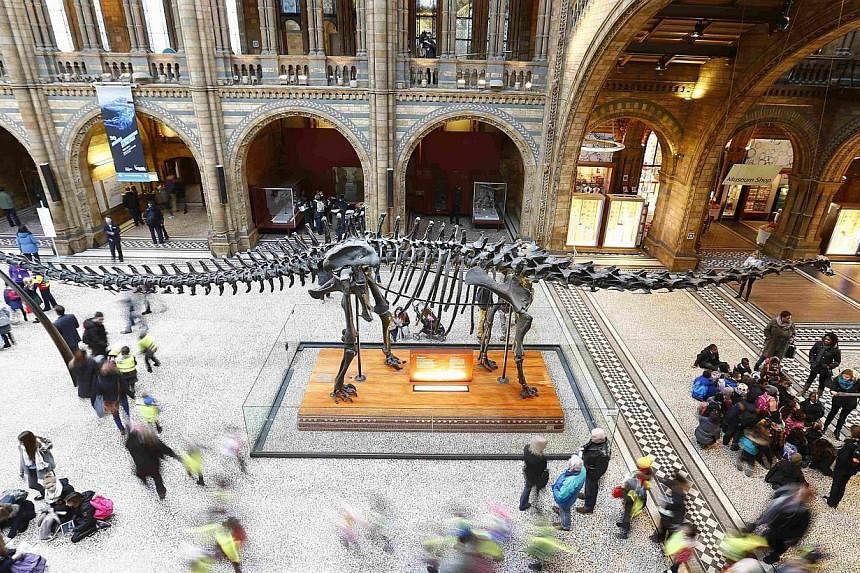LONDON (AFP) - Plans to move "Dippy" the dinosaur from his home in London's Natural History Museum made national news on Thursday, triggering an outcry from fans, an online petition and even a fake Twitter account.
Longer than two London buses, the cast of fossilised diplodocus bones will be moved from the entrance hall in 2017 after more than 30 years and replaced by a blue whale suspended from the roof.
As the Sky News channel asked pundits whether "whales are more relevant than dinosaurs", #savedippy began to trend on Twitter and many Britons spoke of their fond childhood memories of visiting the skeleton.
"The blue whale is just a one-hit wonder. He's no icon that leaves tens of thousands of children staring upward in awe. He's no glimpse at the past, no celebration of the future, no palaeontologist's wet dream," the Metro newspaper said in an online petition.
Hosted on campaigning website change.org, the petition had garnered 2,000 signatures within hours of going live.
The museum says the skeleton of the blue whale, the largest animal to have lived on Earth and which has been hunted to near extinction, would better raise awareness of mankind's impact on nature.
"As guardians of one of the world's greatest scientific resources, our purpose is to challenge the way people think about the natural world," said museum director Michael Dixon.
"That goal has never been more urgent... The blue whale serves as a poignant reminder that while abundance is no guarantee of survival, through our choices we can make a real difference. There is hope."
The 25.2m-long female whale skeleton came to the museum 10 years after it opened in 1881.
It beached itself in 1891 at the mouth of Wexford Harbour in Ireland and its skeleton was bought by the museum for £250.
The 1905 diplodocus cast has been on display for 35 years and was donated to the museum by the wealthy businessman Andrew Carnegie, based on the original specimen in the Carnegie Museum in the United States.
The animal was a herbivore, weighed up to 25,000kg and lived 155 million to 145 million years ago during the late Jurassic period.
The museum is considering Dippy's next move, including the possibility of it going on tour or being exhibited outside the museum.
The profile on the fake account @SaveDippy read simply: "Natural History Museum dinosaur looking for work. Forced into retirement at the young age of 150 million."
Its tweets are an anti-whale tirade, including: "Dear Blue Whale, yes, your bum DOES look big in that. Regards, Dippy".

